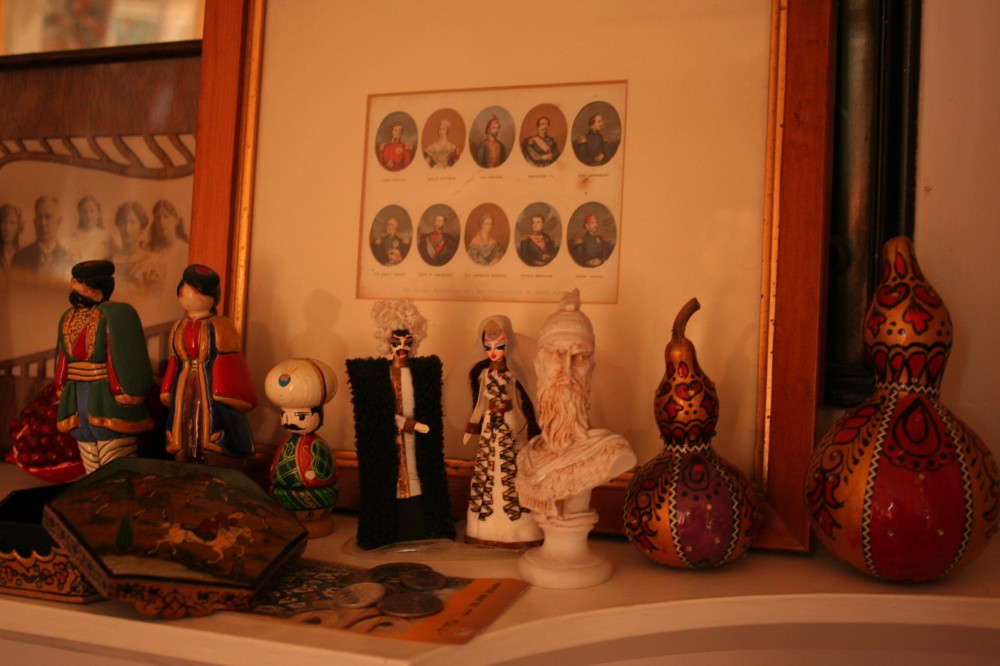 ONE OF THE curators of the fantastic “Love and Devotion” exhibition of Persian manuscripts that ran at the State Library of Victoria asked me to write a review of some associated exhibitions for The Asian Art Society of Australia Review. Turns out I missed the deadline, so I’ll put the review up here, along with some of my own random pictures from the bazaar in Shiraz (somewhere there are a lot of Hazaras milling around).
ONE OF THE curators of the fantastic “Love and Devotion” exhibition of Persian manuscripts that ran at the State Library of Victoria asked me to write a review of some associated exhibitions for The Asian Art Society of Australia Review. Turns out I missed the deadline, so I’ll put the review up here, along with some of my own random pictures from the bazaar in Shiraz (somewhere there are a lot of Hazaras milling around).
EXHIBITION REVIEW – UNSAFE HAVEN: HAZARAS IN AFGHANISTAN AT RMIT GALLERY
The destruction of the Buddhas of Bamiyan was, for many observers, one of the great tragedies of Taliban rule in Afghanistan. The yawning holes left in the gritty sandstone cliffs after the Taliban’s determined and systematic dynamiting where once stood the imposing Buddha figures were pivotal images in the recent exhibition of photographs at RMIT Gallery by Afghan-Australian photographer Abdul Karim Hekmat. Yet Hekmat’s exhibition served to highlight not only the loss of the Buddhas but also the difficult plight of the Persian-speaking, Shiite Hazara people, long resident in Bamiyan province and elsewhere in central Afghanistan.
Through his lens Hekmat observed makeshift schools attended by willing Hazara students, Hazara villages destroyed at the hand of Kuchi nomads competing for grazing land, the first faltering steps of democracy in Afghanistan at the election of September 2010. The result is an unflinching portrait of a desperately poor corner of the globe that receives little international aid and the people who inhabit it.
Here running water, electrical services and paved roads are unheard of luxuries. Yet Hekmat encountered moments of pathos and human warmth, such as in his image of donkeys wearing certificates of appreciation presented by their Hazara owners. These certificates, whimsical though they may sound, were also a form of protest against government neglect, awarded to the donkeys so they “should not forget us like others [do]”.
If all of this seems like dispiriting subject matter, the resilience and humanity evident in the photographs is heartening. The eagerness to learn is apparent in the eyes of youthful students at lessons conducted under canvas; serenity and stoicism is clearly written in weather-beaten faces. Similarly Hekmat’s images capture the harshness of the remote, rugged terrain but also sudden and surprising elements of beauty such as the intense lapis blue of the lake of Band-e Amir west of Bamiyan.
 Running concurrently with Hekmat’s photographic exhibition was Only from the Heart Can You Touch the Sky, a collection of Persian-inspired artworks that also highlighted the plight of the Hazara. Taking its name from a quote from Maulana Jelaladdin Rumi, the exhibition featured the exuberant Persian script of Iranian-born researcher, poet and playwright Mammad Aidani, the calligraphy of Kabul-based artist Ali Baba Awrang and the paintings of Khadin Ali.
Running concurrently with Hekmat’s photographic exhibition was Only from the Heart Can You Touch the Sky, a collection of Persian-inspired artworks that also highlighted the plight of the Hazara. Taking its name from a quote from Maulana Jelaladdin Rumi, the exhibition featured the exuberant Persian script of Iranian-born researcher, poet and playwright Mammad Aidani, the calligraphy of Kabul-based artist Ali Baba Awrang and the paintings of Khadin Ali.
Inscribed in a large and flowing hand on a partition wall, Aidani’s script – excerpts from Rumi – greeted visitors as they entered the space. Ali Baba Awrang’s calligraphy is of an altogether different tenor. Discrete, intense and sometimes claustrophobic his creations are composed of home-made inks on handmade paper. Repeated brushstrokes layered one over another create images out of Persian script, with elements of duck-egg blue, gilt or brilliant red emerging from intricate lattice works of black. The works of Khadin Ali, now based in Sydney, display a similar intensity. Drawing on the ages-old Persian tale of The Shahnama, his own experience as a Hazara and classical miniaturist techniques, Ali incorporates mythical figures, elements of calligraphy and opaque washes of colour in his allegorical works.
Unsafe Haven: Hazaras in Afghanistan and Only from the Heart Can You Touch the Sky were held at the RMIT Gallery, 344 Swanston Street, Melbourne, 12 April – 9 June 2012.
